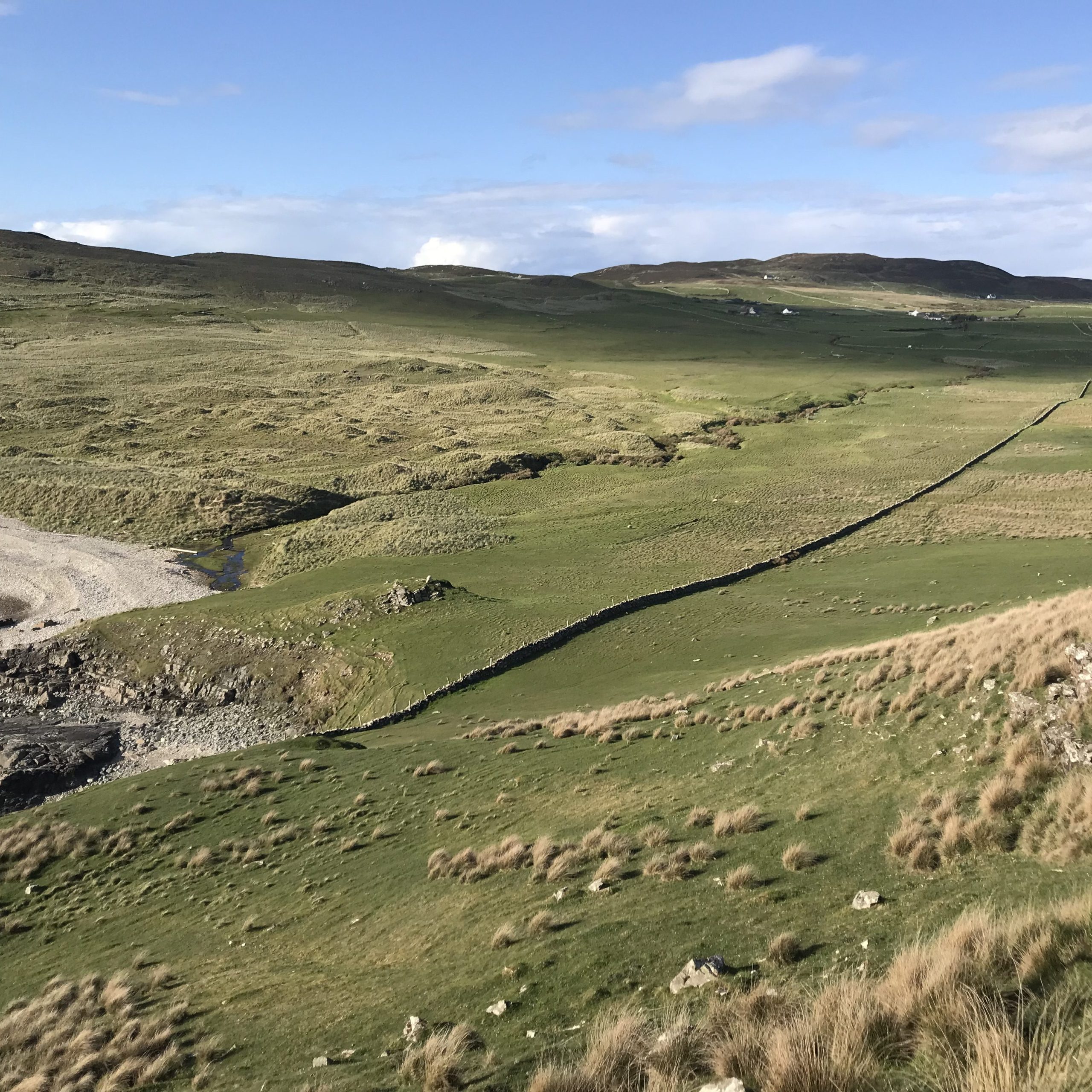Lurgabrack, Rinclevan and Pollaguill (part of Horn Head and Rinclevan SAC and overlaps with Horn Head to Fanad Head SPA)
This coastal site is located in north Co. Donegal and comprises a complex of habitats of which open marine areas, sea-cliff, sand dunes (various types), blanket bog and heath occupy the largest areas. The site presents an impressive and extensive complex area of Machair habitats.
The main land uses within the site are agriculture (mostly grazing) and recreational activities. Unusually, roads have not been constructed providing access to the beach, resulting in low-impact recreational activity.
One of the local landmarks is New Lake, a slightly brackish waterbody which was formed in the 1920s when blown sand (from the dunes to the west) blocked the outlet which connected Rinclevan Strand to the sea.
New Lake is the key area within the SAC for breeding waders and supported a total breeding wader population of 22 pairs in 1985 and 1996, including Dunlin, Lapwing, Redshank, Snipe, Oystercatcher, Ringed Plover and Common Sandpiper. However, populations declined post 1996, with just four pairs of Lapwing and two pairs of Snipe remaining in 2019.
There are significant resources available for pollinators, and the site offers a large area of flower-rich grassland with low disturbance and a variety of different resources. This has already been enhanced in parts of the site by targeted grazing, but can be enhanced further. Pollinator species recorded from this site and their status on Ireland’s Red List of species include:
Near Threatened: Grayling (Hipparchia semele); Small Heath (Coenonympha pamphilus); Large Red Tailed Bumble Bee (Bombus lapidarius); Moss Carder-bee (Bombus muscorum)**
Vulnerable: Dark Green Fritillary (Argynnis aglaja); Northern Colletes (Colletes floralis)**
Endangered: Small Blue (Cupido minimus)
**listed as vulnerable at a European level.

